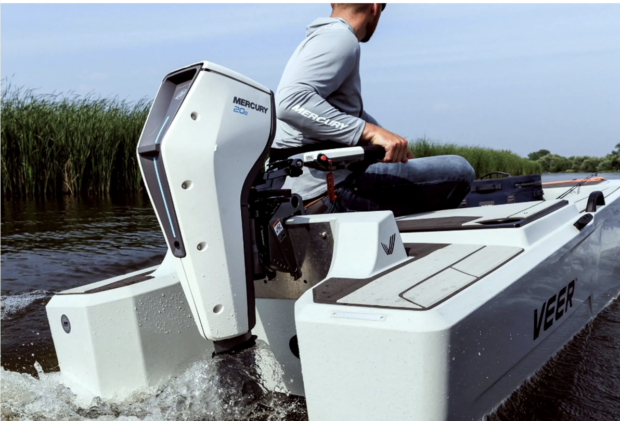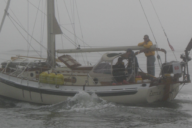In last week’s Just Cruising column, I pondered the pros and cons of making the switch from a gas-powered outboard on our dinghy to an electric outboard. There is a lot of innovation going on in electric power for boats these days, so the switch is appealing. But is it? We asked readers to share their experiences with electric outboards and here are several good replies. GD.
Hi George,
We were early adopters of the Torqeedo 1003, starting I think in 2012 or so. Left San Diego for full time cruising in 2016. There were some initial issues with dissimilar metals, or in general the materials showing premature corrosion issues until we figured out how to better care for it. In our view, the main issue is managing expectations.
For a low HP unit like this, we were never going to be able to plane. But that was never the case for our dinghy anyway, a Walker Bay Rigid 10 with float tubes. The advantage is that a rowing-friendly dinghy like this, or very light RIB is easy to push through the water, making it a good candidate for electric. We could routinely go 5-10 miles at around 4 knots, or over 20 miles if we just poked around at around 2.5. Range was always easy to manage with the built in GPS and real time feedback in the tiller. We love not having any gas on the boat, and this was a big reason we chose to go this route. We would choose to do it again (and essentially have, replacing the battery twice in 12 years at no small cost), but it’s not for everyone. One must be prepared to not get anywhere too quickly.
The motors you are looking at are certainly next generation stuff, with the ability to plane, etc. Regardless, the technology is fundamentally the same. Decide what’s important for you and make a choice. Like almost all boats and boat stuff, it’s a matter of balancing your compromises.
Randy Fraser
Online Cruising Guide
randy@onlinecruisingguide.com
onlinecruisingguide.com
Hi George,
We just replaced our 9.9 Yamaha 2-stroke with a Torqeedo Travel 1103.
Big decision – but has definitely helped me as my husband can no longer assist getting an outboard on the dinghy….
We didn’t use the 9.9 enough – always had issues with bad gas – unit was totally reliable when we used it a lot.
I like the this Torqeedo model as it has the swappable batteries (I have 3) and when all apart, it’s very easy for me to install on the dinghy by myself. The unit is equivalent to a 3 hp so we lost some there, but for basic putting around we are just fine. We have an 11’ rib with aluminum bottom.
I didn’t want to have to lug a large, heavy battery down the dock & into/out of the dinghy. Having 3 batteries relieved my concern about getting stuck somewhere. I have the regular charger for it at home, but also have a 12v adapter for traveling.
Not sure what will change at Torqeedo now that Yamaha has taken it over.
Marsha
George
Switching to electric was failure for me.
The motor’s low torque cannot go against the tide from Martha’s Vineyard’s South beach to Edgartown harbor with a light load. Twice we a bent shafts due to kids with lobster pots in Pulpit Harbor, Maine, which is a mine field at best. Plus, the motor is expensive to repair.
Thoughts:
Bleeding edge tech is very expensive and frankly not fully developed yet.
One battery will never suffice.
Slow charge, big draw running a diesel to charge a battery seems environmentally backward.
Heavier than my 4 hp four stroke.
What do I do with the spent battery?
Gas is always available.
So, I sold it online and took a 57% hit before tax.
Biggest advantage is not carrying gas, though the new gas containers are a big upgrade.
Nate Burke












